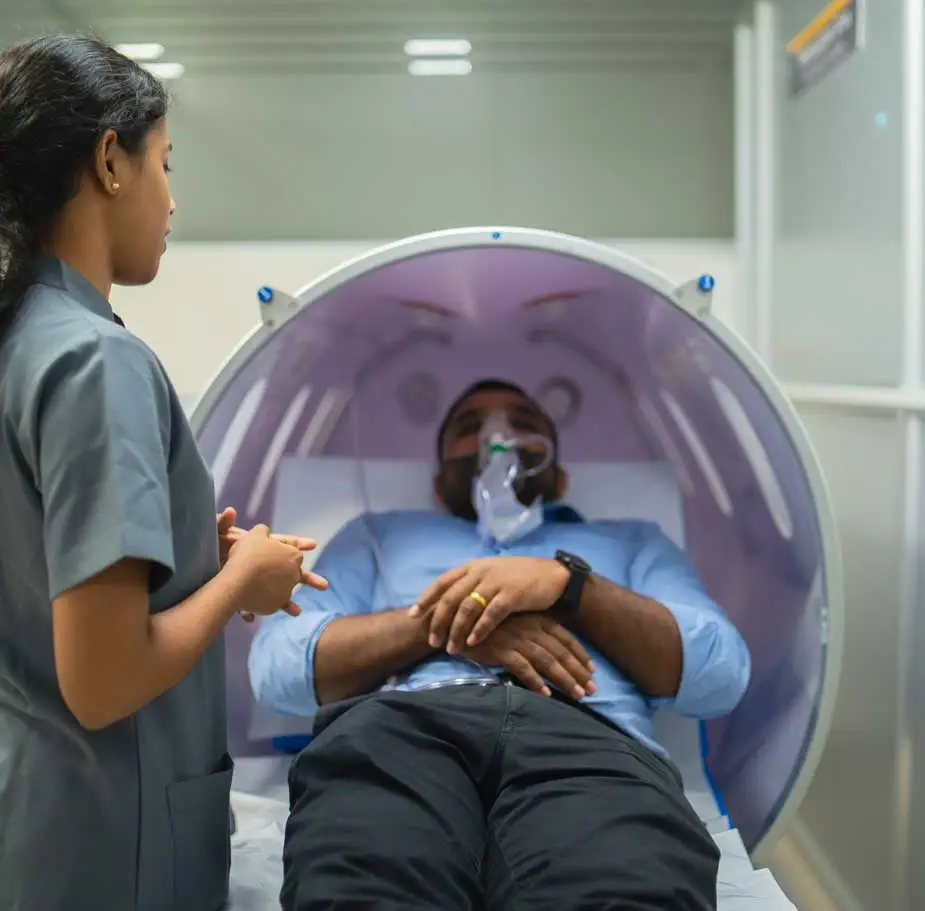Ischemic Ulcers
Symptoms
Symptoms of Ischemic Ulcers may include:
Pain in the affected area
Sores or open wounds
Coldness or numbness in the extremities
Shiny or tight skin on the legs
Hair loss on the legs
Weak or absent pulse in the affected limb
Pale or bluish skin color
Difficulty healing wounds
Causes
Causes for Ischemic ulcers may include:
Diagnosis
Treatments
Ischemic ulcers are caused by poor blood circulation, leading to tissue damage. Early treatment is crucial to prevent complications and promote healing. Prompt intervention can prevent tissue necrosis and reduce the risk of infection.
In our Wound Healing Program, we use hyperbaric oxygen therapy (HBOT) to treat ischemic ulcers. HBOT enhances oxygen supply, expediting healing and reducing infection risks. Complemented by targeted exercises, lifestyle management, and nutritional guidance, our approach ensures comprehensive care, promoting optimal outcomes in the treatment of ischemic ulcers.

Ischemic Ulcer Treatment
Maana Health’s holistic wound healing program combines various elements with HBOT, reducing the risk of amputation.
Maana Health’s innovative wound healing program offers a comprehensive and holistic approach to treating chronic wounds. By combining advanced medical treatments, including Hyperbaric Oxygen Therapy (HBOT) and cutting-edge technology, the program aims to accelerate healing and improve patient outcomes. With a team of experienced healthcare professionals, Maana Health provides personalized care and support to address the unique needs of each patient. This promising and hopeful program offers new possibilities for individuals suffering from chronic wounds, providing renewed hope for a better quality of life and the potential for long-term healing.
Elements of Wound Healing Program
Hyperbaric Oxygen Therapy (HBOT)
Exercises & Rehabilitation
Lifestyle Management
Diet & Nutrition Management
Get a Quick Reply Here
Office
Monday to Saturday: 8:30am – 6pm
